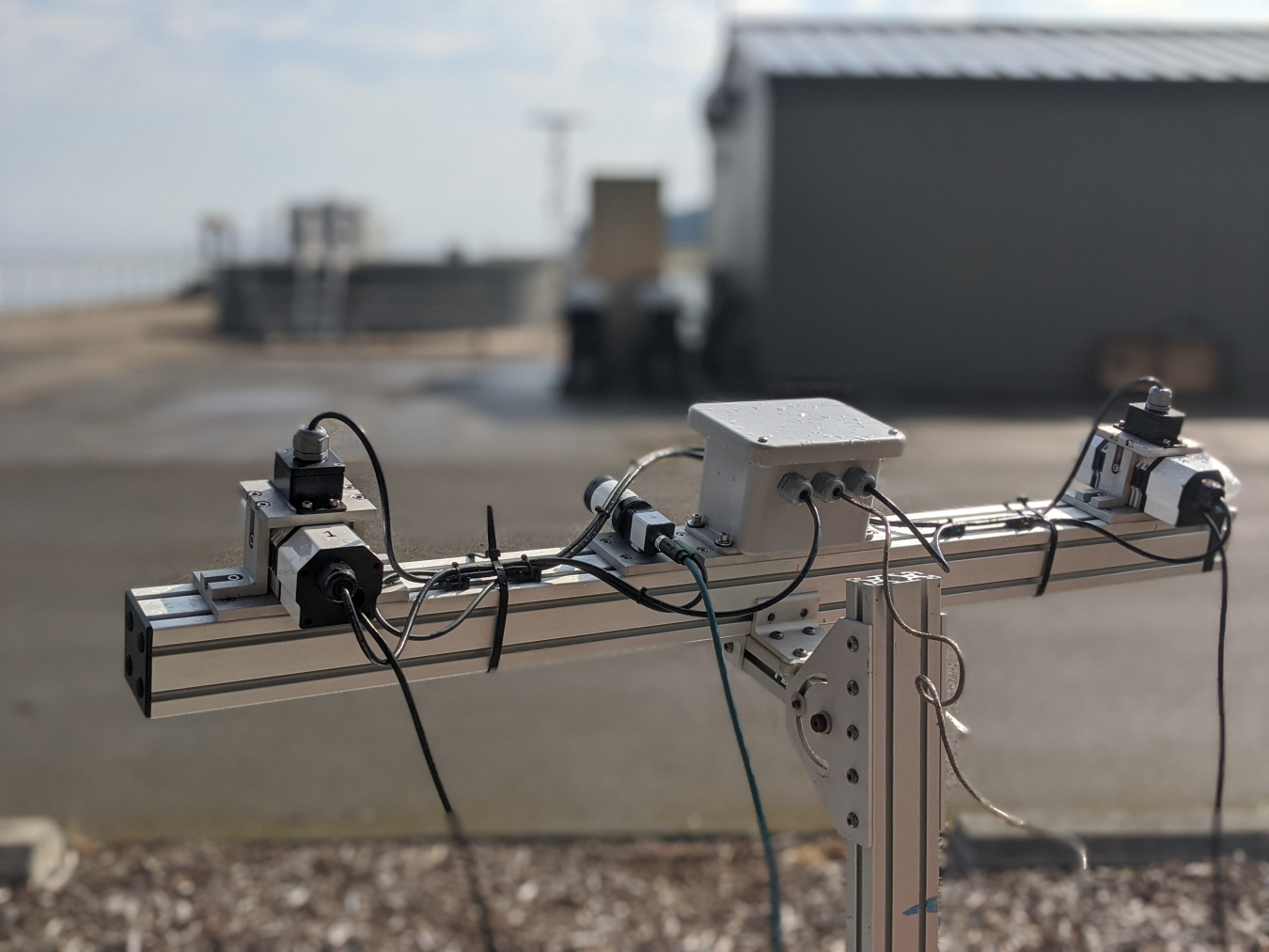This innovative system collects behavioral data for birds and bats in the vicinity of wind turbines to help the wind industry meet monitoring requirements for development of proposed wind farm sites.
Wind Energy Technologies Office
June 6, 2024
ThermalTracker-3D—a thermal stereo vision technology developed by Pacific Northwest National Laboratory (PNNL) with funding from the U.S. Department of Energy (DOE) Wind Energy Technologies Office—is making strides toward commercialization. The innovative system collects behavioral data for birds and bats in the vicinity of wind turbines to help the industry meet monitoring requirements for development of proposed wind farm sites. A private company, Sightir, recently signed a licensing agreement that reserves the right for future commercialization of the technology.
Previous monitoring systems designed to study the potential effects of wind turbines on avian wildlife are limited to daylight hours and often generate massive volumes of data that are costly and time-consuming to store and analyze. ThermalTracker-3D is capable of computationally efficient, continuous monitoring of flying objects—day or night—and in any weather condition. The patented technology uses a stereo pair of thermal cameras and custom software to provide three-dimensional data in near real-time, including flight heights, flight speed, and animal size.
ThermalTracker-3D’s unique algorithm takes a segment of video and compresses it into one single image that can show the entire flight track of a bird or bat. Unlike regular cameras, thermal cameras can operate in low visibility. In the resulting image, the animals stand out against the background making them easy to detect.
Another distinct feature is the technology’s compact size, which makes it particularly useful for deployment in remote, offshore locations, such as on research buoys. In fact, ThermalTracker-3D hitched a ride on a lidar buoy stationed off the coast of California to collect information about seabird and bat activity.
ThermalTracker-3D data provide decision-makers with vital information to evaluate and mitigate potential risks to wildlife, which facilitates environmental permitting for the development of wind farms and enables the nation to take steps toward its wind energy goals.
In 2023, Sightir, signed a formal option agreement for the technology that reserves the right for future commercialization of ThermalTracker-3D for environmental monitoring and drone detection and tracking for the fields of offshore and land-based wind. The California Energy Commission has funded PNNL and Sightir (in collaboration with others) to further develop and deploy the technology.
The technology has also received awards and recognitions along its path to commercialization. In 2021, for example, it won a prestigious R&D 100 Award.
ThermalTracker-3D is available for licensing in certain fields of use by additional partners interested in investing in clean energy or continuous monitoring.
Learn more about this exciting technology.

